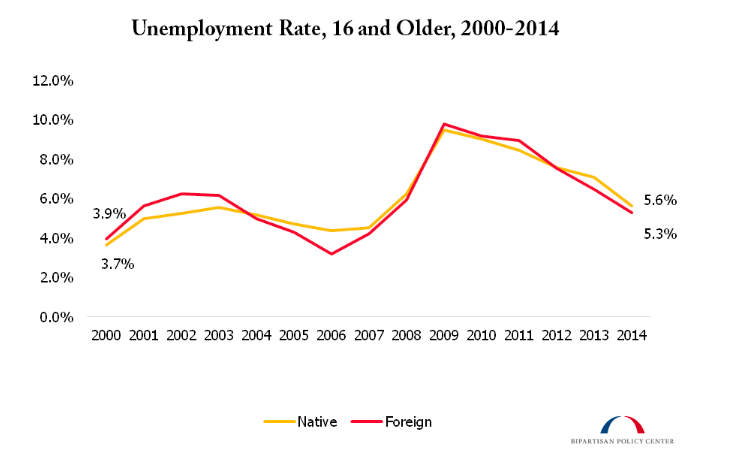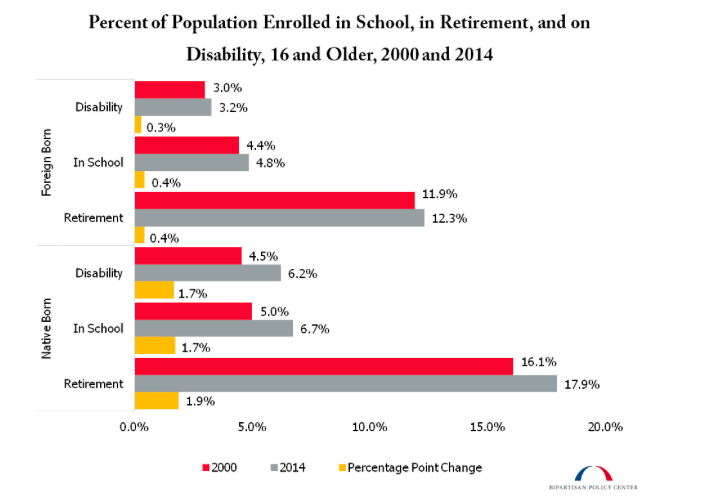The Republican presidential primary campaign’s focus on immigration has pushed the touchy issue of foreign-born workers in the U.S. job market to the forefront of public discussion.
When Donald Trump and other candidates rail against illegal immigrants and birthright citizenship, part of their argument, either stated or implied, is that the influx of people from outside the U.S. – legal and illegal – is somehow hurting American workers.
Related: Dump Trump’s Deportation Plan for This Better Way
When it comes to labor force participation, the argument has a certain appeal, as Kenneth Megan at the Bipartisan Policy Center notes in a recent paper. Since 2000, the percentage of foreign-born adults in the U.S. has jumped by 46 percent, while the number of native-born adults rose only 14 percent. (Native-born Americans are still, as a category, seven times larger than foreign-born.)
However, labor force participation among those two groups has diverged sharply over that time. In 2000, both reported a labor force participation rate of 67 percent. Since then, the foreign-born population’s participation rate has dropped only slightly, to 66 percent, while the native-born rate has dropped all the way to 62 percent.
It makes for a compelling argument that the increased presence of foreign-born workers is keeping native-born workers from finding jobs. However, says Megan, that argument is flawed.
“Contrary to campaign rhetoric, there is no clear evidence that immigration has brought forth a decline in native-born employment or labor force participation,” he writes.
Related: Big Surprise – Hispanic Voters Can’t Stand Donald Trump
For one, the unemployment rates for both categories of workers have moved in tandem, separated only by a fraction of a point, for the entire period in question. That means, essentially, that for foreign-born and native-born workers looking for a job, their prospects are roughly equal.

The big driver of the difference in workforce participation is that, faced with a frustrating job search or other life events that make dropping out of the workforce a possible choice, native-born workers are simply more likely to have appealing alternatives.
“At the heart of these trends lies the fact that native-born individuals generally have a greater amount of options than the foreign-born population with regard to their labor market decisions,” Megan writes.
Related: Bush Warns that Trump’s ‘Unrealistic’ Wall Will Cost Hundreds of Billions
“Immigrant families have lower median incomes, and are more likely to be living below the poverty line—thus they are less likely to have the means to enroll in college. Immigrants also tend to have lower levels of retirement savings. And undocumented immigrants—which comprise around 28 percent of the foreign born population—are unable to qualify for Social Security Disability Insurance.”

The persistent belief that foreign-born workers are stealing jobs from native-born Americans is the product of a well-documented fallacy that has been repeatedly debunked by economists, Megan reports.
“Blaming immigration for declining employment ultimately rests on the flawed belief that economies can only produce a fixed number of jobs and that for every job occupied by an immigrant, a native-born worker must be unemployed,” he writes.
Will the issue continue to burn on the campaign trail, though? Almost certainly yes, as long as there are candidates like Donald Trump willing to keep stoking the fire.




